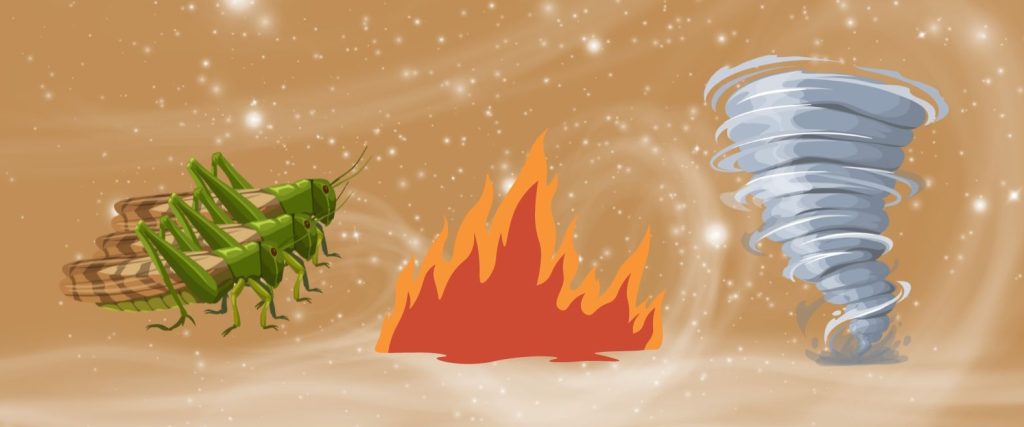Without a doubt, the forces of nature were the most challenging adversaries that confronted homesteaders.
In Lone Tree Claim, Katie Rose Kelly comes up against Mother Nature time and time again. Spoiler alert: she wins.
From floods and fires to tornados and blizzards, pioneers were constantly watching – and battling – the weather. Most of these natural disasters were unexpected, compounding the danger.
Yes, blizzards are expected in the winter, but homesteaders didn’t have the luxury of round-the-clock weather forecasts that might allow them to prepare for winter storms. The Great Blizzard of 1888 struck on a January a day that started out so mild that many children didn’t even wear winter coats to school. In the aftermath, 235 people perished on the plains.
Prairie Fire: A Great Plains History chronicles the stories of pioneers who fought fast-moving blazes. The book details how farmers and ranchers fought the fires that raced through tinder-dry prairie grasses. I relied on those stories when writing about Katie’s battle against the prairie fire in Lone Tree Claim.
While grasshoppers and locusts were much more frequent and devasting in the 1930s, there were instances in the 1860s and 1870s when grasshoppers passed through, eating everything in their path. One article described how ‘hoppers ate the fabric off a covered wagon on a military post. Other articles explained how farmers fought the flying critters. That information found its way into Katie’s story, too.
These and other forces of nature were just some of the reasons that less than half of homesteaders were able to successfully prove their claims: 42% of unmarried women and 37% of men, married or single.

